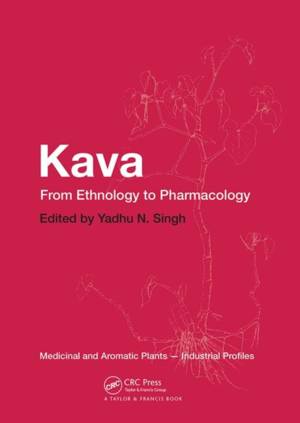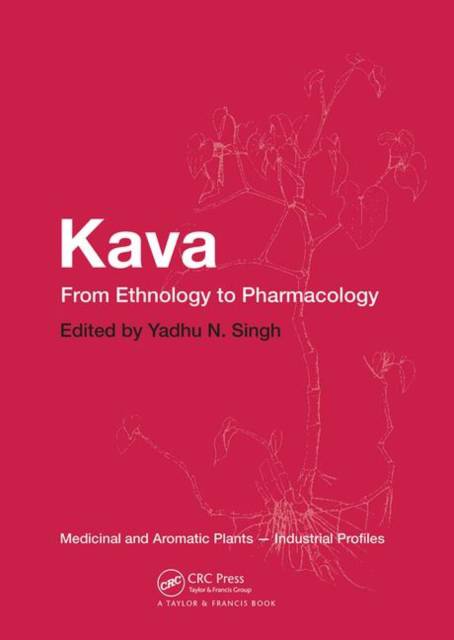
- Afhalen na 1 uur in een winkel met voorraad
- Gratis thuislevering in België vanaf € 30
- Ruim aanbod met 7 miljoen producten
- Afhalen na 1 uur in een winkel met voorraad
- Gratis thuislevering in België vanaf € 30
- Ruim aanbod met 7 miljoen producten
Zoeken
Kava
From Ethnology to Pharmacology
€ 83,95
+ 167 punten
Omschrijving
Kava is an herb that has been used for ceremonial, ritual, religious, social, political, and medicinal purposes for centuries. In the past few decades, kava has been widely marketed as an over-the-counter treatment for anxiety, stress, restlessness, and sleep disorders. Kava: From Ethnology to Pharmacology describes the history, botanical origins, production, economic aspects, and chemical and biological properties of this medicinal herb. A major part of the book focuses on the chemical and pharmacological properties of kavalactones, the psychoactive constituents of kava that reportedly have sedative, anxiolytic, analgesic, local anesthetic, anticonvulsant, and neuroprotective properties. Clinical and medical studies that provide evidence of kava's therapeutic benefits are balanced with an assessment of the known adverse effects and interactions in which kava has been implicated. With contributions from experts in the field, this volume presents a comprehensive view of the traditional aspects of kava and the latest applications for the herb. It is a valuable reference for botanists, phytochemists, toxicologists, physicians, pharmacists, herbalists, and alternative medicine practitioners.
Specificaties
Betrokkenen
- Uitgeverij:
Inhoud
- Aantal bladzijden:
- 176
- Taal:
- Engels
- Reeks:
Eigenschappen
- Productcode (EAN):
- 9780367446598
- Verschijningsdatum:
- 2/12/2019
- Uitvoering:
- Paperback
- Formaat:
- Trade paperback (VS)
- Afmetingen:
- 175 mm x 246 mm
- Gewicht:
- 329 g

Alleen bij Standaard Boekhandel
+ 167 punten op je klantenkaart van Standaard Boekhandel
Beoordelingen
We publiceren alleen reviews die voldoen aan de voorwaarden voor reviews. Bekijk onze voorwaarden voor reviews.











